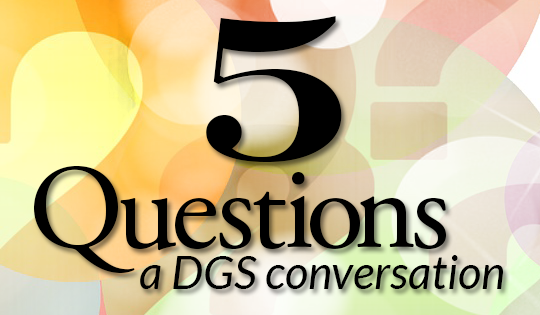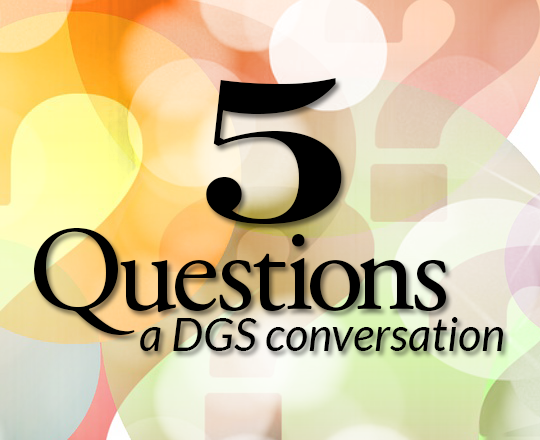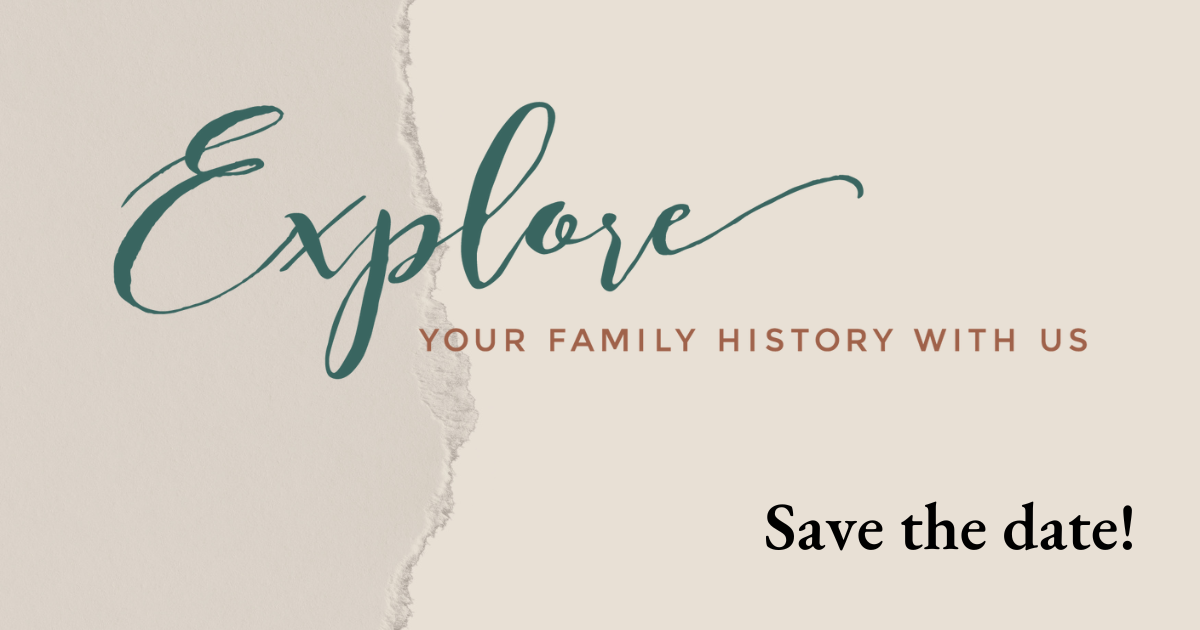Five Questions: Why do Genealogists Love Cemeteries?


When I was a child, my grandmother and I used to walk in a nearby “park” full of strange granite sculptures. Years later, I realized that the “park” was Mount Salem Cemetery, which was next to my grandparents’ house. I believe my love of cemeteries started with those childhood experiences. In this conversation, four other genealogists discuss their connections to cemeteries.
The participants
- Susan Rainwater is the current DGS Director of Finance and member of the Website and Newsletter subcommittees.
- Suzan Younger is a former DGS President and Vice President, and a member of the Newsletter subcommittee.
- Barbara Ware is a former DGS Director of IT, and a current member of the Newsletter subcommittee.
- RL Canady is a DGS member and a long-time participant in the African American Genealogical Interest Group.
Question 1:
Rainwater: How did you become interested in cemeteries?
Younger: Unlike many genealogists, my earliest cemetery visit was as a teenager. My interest in history and genealogy spurred my interest in cemeteries. If you pay close attention, the story of the community reveals itself as you wander through the cemetery. Is there a cluster of deaths because of a disaster, an epidemic, a war, or a criminal action? Do family names suggest a long-term association with the community or suggest ethnic origins? Are the tombstone dates indicative of the community’s duration?
Ware: My material grandmother took my cousin and me to Pecan Grove Cemetery in McKinney when we were in our early teens and showed us where their two young children who died in 1910 and 1912 were buried. Years later, when I began to research my family, I decided to go to that cemetery to see if I could find them. With another cousin who set me on the path for genealogical research, we located a number of small cemeteries in Collin County where the burial locations of other family members were. Many of the small cemeteries were overgrown and not well cared for. Since that time, I have traveled to many southern states looking for other family members in cemeteries.
Canady: When I was about 10 years old, my brother, who was one year older, would ride with my father and other men out to the rural cemeteries and do some work chopping weeds and cleaning the cemetery. We were not allowed to help and had to sit in the bed of his Studebaker pickup truck and watch the men work. I believe listening to my father talk about the people and how great they were and usually ending with a summary saying, “There will never be another like him”, this caught my interest and prompted me to find out interest in history and the people who made it happen.
Question 2:
Rainwater: Have you ever transcribed a cemetery, or part of a cemetery?
Younger: I’ve transcribed parts of cemeteries with a small group and helped to transcribe a whole cemetery in one day as a special project. The process depends on the size of the cemetery, its location, and the time you have for the transcription. I find it helpful to research the cemetery and learn as much as possible before beginning work, including any existing maps. Decide if you are going to write the tombstone information on paper forms or take images. Read articles and/or books about transcription projects if it is a large cemetery and not just a few individuals.
I benefit from the work other volunteers do and this is one way I can “pay it forward.”
Ware: I have transcribed a number of cemeteries around Dallas. Carole Ruska, a DGS president encourage DGS volunteers to record Oakland Cemetery. Carole, Suzan Younger, Alvin Harper and others began there in 1999. We created forms to record the information from the markers, their location and condition. Work on Oakland and its records continues today as we help the library archives to access the cemetery’s business records. We published six of the 40 sections in The DGS Journal with a goal to publish a book. Tony Hanson suggested we put the cemetery records online on the DGS website instead. With his leadership, that recommendation grew to be the Dallas Cemetery Database, a map of the location of cemeteries in Dallas County, a photo collection of the gates of Dallas County cemeteries plus creating and posting memorials and photos on Findagrave and Billion Graves.
Canady: I have participated in transcribing three cemeteries. I helped with the Daniel Cemetery in Dallas, Texas and the Cameron Rest Cemetery in Cameron, Texas and the Little Rocky Cemetery in rural Milam County Texas. I think there might be a couple more that I assisted in research and recording in Dallas.
Getting experience in areas of genealogy that we all will be required to do when documenting our ancestors in cemeteries is important. Essential location facts help you find headstone locations.
Describe the street location, distance cemetery from road, do a GPS coordinates latitude/ longitude reading; establish a columns and row chart. Photo first headstone assign to first columns and row; Record all information in writing and for transfer to digital records. Write and photograph all information on headstone starting with name; b.(date); d.(date); write inscription, take a GPS reading for that first headstone continue in same order to next headstone in same column.
Question 3:
Rainwater: Do you have a “cemetery kit” of tools you take on cemetery expeditions?
Younger: I have a checklist I use depending on the size of the project. The tools are common‑sense items, such as brushes, water, clippers, etc. More importantly is how to dress. Do not be a “bright and fragrant flower” that attracts insects. Avoid colorful clothing and lotions, hair spray or laundry products with aromatic scents. Dress in layers appropriate to the season and weather. Depending on the cemetery’s location, go with a friend or family member. Pay attention to your surroundings. Stay safe.
Ware: I do have tools and supplies that I take with me. It varies with where I am going. One of my favorite tools is a grave probe that one of my work colleagues made for me from a metal rod, a dowl rod and a wooden drawer pull. We used it to find buried tombstones (not burial vaults). Other items: water, rawhide work gloves, camera, mosquito spray, long sleeve shirt, sturdy shoes, sun hat, rakes, brooms, clippers for various sizes.
Canady: I carry tools that are always needed when working on a cemetery project such as transcribing. I always like to dress appropriately with long sleeves, boots and gloves. My tool kit consists of a small brush, plastic water bottle with squeeze top, cutting dikes or shrub cutter, utility knife. I will carry in my car garden hoe and shovel.
Question 4:
Rainwater: Are you involved in any cemetery organizations?
Younger: Although I’m not associated with any cemetery organizations, I’ve worked with volunteers from the Dallas Genealogical Society on several projects. I value this volunteer work and the relationships I’ve built over the years.
Ware: I search for, create and add information on Findagrave and Billion Grave memorials. I created the Findagrave sites for two small cemeteries in Simbario and Spadola, Italy. There I recorded and photographed 50 of the 57 burials and photos in Simbario and 35 of the 50 burials in Spadola while traveling with a friend to the small towns from which her grandparents immigrated.
Canady: I am president of the Little Rocky Cemetery Association.
Question 5:
Rainwater: What’s the most exciting or interesting discovery you ever made in a cemetery?
Younger: There is no one discovery I can cite. I’ve worked on the Oakland cemetery for decades now and I’ve learned so much from the experience. The burials began in the late 1890s and continue to this day. This spread of time has allowed me to see a side of the Dallas community I would never have seen otherwise. I think one of the most important changes over this time was the introduction of antibiotic medications and how that changed how and when people died. The infant mortality was shocking until the 1930-40s when antibiotics made a difference. Part of Dallas’s social history can be told in the stories of the Oakland Cemetery, and it is amazing.
Ware: When I was in Italy, I received an email from a man in Canada who told me that he had just received a call from his aunt in Simbario who told him that she had been to the cemetery that week and placed flowers on the vault of his grandparents. When he looked at Findagrave, he saw the photo I had taken and posted of the vault with the flowers two days before.
Canady: My grandfather, grandmother. My great-grandfather and great-grandmother are all buried next to each other in the same cemetery, Little Rocky Cemetery in Milam County, Texas.
Each participant was given the five questions and responded with five answers. The conversation has been lightly edited.

